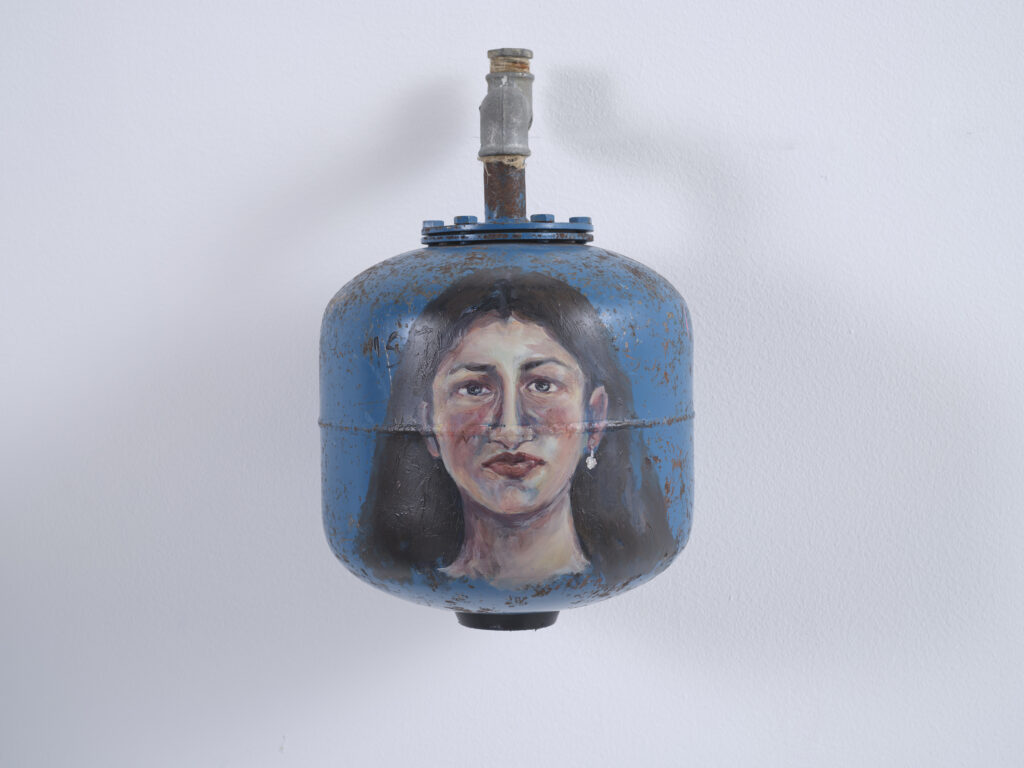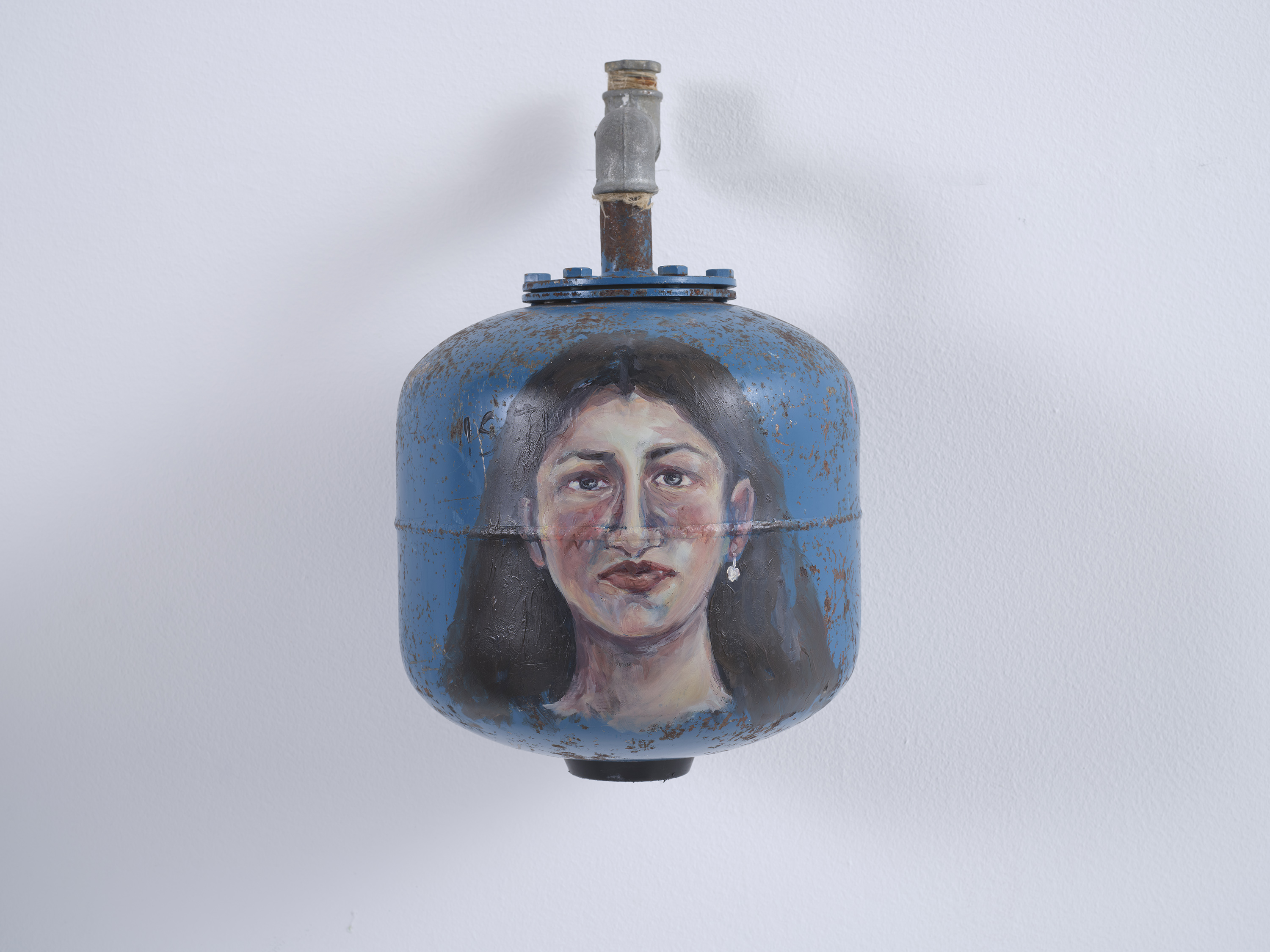Artists: Selma Selman, Jasmina Cibic, Šejla Kamerić
Title: Her Barbaric Luxury
Curator: Martina Marić Rodrigues
Venue: Trotoar Gallery, Zagreb

If you think you can grasp me, think again
my story flows in more than one direction
a delta springing from the riverbed
with its five fingers spread
– Adrienne Rich
Text by Martina Marić Rodrigues:
When Igor Stravinsky’s ballet Le Sacre du printemps – The Rite of Spring premiered at the Parisian Champs-Elysées Theatre in 1913, the rite turned into a riot. What was the cause of this consternation? What nerve did Stravinsky and the choreographer Vaslav Nijinsky touch to provoke the audience to jump to its feet — and not in the usual, more positive sense of the phrase?
At the time, the Rite of Spring had no precedent in contemporary ballet. It introduced hitherto unfamiliar musical concepts and a new aesthetic of movement: challenging the Western obsession with symmetry and harmony, the music featured spasmodic, asymmetrical rhythms and dissonant harmonies. However, it was in all probability the dancing that was the true cause of the audience’s alarm; instead of pretty ballerinas moving elegantly and ethereally across the stage (in perfect keeping with the conventional idea of beauty at the time as soothing, as something which affirms the orderliness of the world around us), contemporaries reported that the movements of the dancers were “ugly”, “exaggerated” and “primitive”.
Such radical breaks are rarely welcomed when they first appear, and the citizens of Paris felt that the ballet, by negating the rules and conventions of the art form, was negating their very civilisation. Stravinsky and Nijinsky had tampered with the aesthetic and moral principles of contemporary culture, and provoked what (in a particular segment of society) would probably also be felt today—fear.
The public reaction is best summarised by a headline that appeared in a French newspaper the day after the premiere: “Barbarity!”








This event, which serves as a historical reference for Jasmina Cibic’s work Her Barbaric Luxury (2022), leads us into the context of this exhibition. An installation consisting of forged iron sculptures that are reminiscent of protest banners, Cibic’s work plays with the words written by the critics against the progressive novelty of the ballet. These words, which expressed resistance to the rupture of continuity as well as conformity to standards of femininity and gracefulness, are arranged and rearranged by Cibic. It is not insignificant that this rupture was brought about by cultural outsiders, newcomers from the fringes (and beyond) of Europe, a fact that triggers yet another of society’s defence mechanisms: the feeling of superiority and the urge to maintain one’s own, central, position.

It is in the claiming of space, and the challenging of established social patterns, that Šejla Kamerić, Jasmina Cibic and Selma Selman intersect. Through their unique practices and on the basis of their personal experiences, each artist draws attention to the mechanisms of exclusion, repression and distortion.
A strong metaphor for failed systems (even those created to provide protection) can be found in Šejla Kamerić’s piece Bosnian Girl. A special iteration of Bosnian Girl is on display at the exhibition, a limited edition of serigraphs on canvas in a variation of six colours (2007), created in cooperation with the German curator René Block after one of the first international shows that brought together artists from Southeastern Europe (In the Gorges of the Balkans, Kunsthalle Fridericianum, Kassel, 2003).
It is a somewhat provocative move to place Jasmina Cibic’s and Selma Selman’s more recent pieces (2020–2022) in the same context as Bosnian Girl, which has, since the moment of its creation in 2003 (on the anniversary of the tragic events in Srebrenica), accumulated many layers of meaning, stemming from the piece or imposed on it. With over twenty years of continuous appearances at exhibitions and in public activities, it has become a historical reference itself. It symbolises the conditioning of the female body—and not just by means of national ideologies, but also through cultural imagery of Western European communities, which displaces the Balkan, locating it in the realm of the other, the inferior, the barbaric.
Relentlessly evoking the specific moment and territory of its origin, Bosnian Girl also embodies something that is deeply rooted in the collective emotional core—the human right to dignity. And that is what makes this piece timeless and universal. “The eyes of the artist that look at us from behind the bars of those humiliating words were disillusioned long ago. They don’t look to excite compassion. Even less do they ask for help […] These eyes demand solidarity.”
Jasmina Cibic likewise digs up issues of memory and national identity. Deliberately and analytically sifting through the remains of history, she finds events governed by a conspicuous political rhetoric, which she deconstructs in order to carefully reconstruct them into multimedia projects. In the second of her works on display, A Guiding Star on Our Journey to Transform (2021), we see one of the recurring themes of her work—the exposing of the power structures that systematically use culture and art in the shaping of their ideologies.
The circular forged iron sculpture features a quotation taken from the notes of the architects of the Palace of Culture and Science in Warsaw, one of the most controversial icons of Stalinist architecture and the epitome of the unwanted gifts bestowed by Stalin upon the Polish people. Under the slogan “a gift from the Soviet people”, the building was meant to promote the future, acting as a guiding star for the creation of a new man in complete anthropological identification with the grandomania of the building itself. Completed in 1955, it remained the highest building in Poland until 2022, known as the “patriarchal power vertical”.
While Jasmina Cibic is the director of her works, Selma Selman is the protagonist of hers.
As an artist of Roma background, Selma Selman breaks through frames of ethnicity and class, but in her work she nevertheless accepts these frames as necessary and unrelenting. Like Šejla Kamerić did before her, Selman joins a long tradition within feminist art in which the artist’s body becomes an instrument for the critique of multigenerational trauma. However, there is a noticeable difference: Selman is oriented toward tangible activity and concrete results for her actions.
And so, in her performances she extracts noble metals from machine scraps (Motherboards, A Golden Nail, 2023), purchases her freedom (I Will Buy My Freedom When, 2018) and fulfils her mother’s desire to see the sea for the first time in her life, at the age of 47, after she finally managed to become a Bosnian citizen and receive a passport (Saltwater at 47, 2017).
At the heart of Selman’s art lies the transformation of values: she turns scrap metal into gold; the stigmatised manual labour of dissembling cars at the junkyard into prestigious art performances in gallery spaces; inherited barbarity into cultural distinction.
The works exhibited at Trotoar belong to a series of paintings on metal that Selman has been working on continuously, like a personal scrapbook. Painting on different discarded metal surfaces, objects with their own set of familial and hereditary connotations, she creates self-portraits and portraits of her family members, written messages and lines of poetry. The Self Portrait on recycled metal (2021) is accompanied by We Are Intellectuals (2020–2021), letters painted on the roof of a car, which draws us into a semiotic (and ideological) game.
If, that is, we agree to play along.
1 Adrienne Rich, Delta, Time’s Power (1985– 1988).
2 Isar, N. Pathei Mathos and Skandalon in Le Sacre du Printemps. Postmedieval (2023).
3 René Block has been working as a curator, gallery owner and publisher on an international level since the 1960s. Edition Block (est. 1966) was one of the first publishers of multiples and limited-edition artworks.
4 Milica Trakilović, Unraveling the Myth, Tracing the Limits of Europe Through Its Border Figurations (2020).
5 Maria Todorova, Imagining the Balkans (1997).
6 Boris Buden, Transition to Nowhere, Art in History After 1989 (2020).
7 Michał Murawski, The Palace Complex: A Stalinist Skyscraper, Capitalist Warsaw and a City Transfixed (2019).
